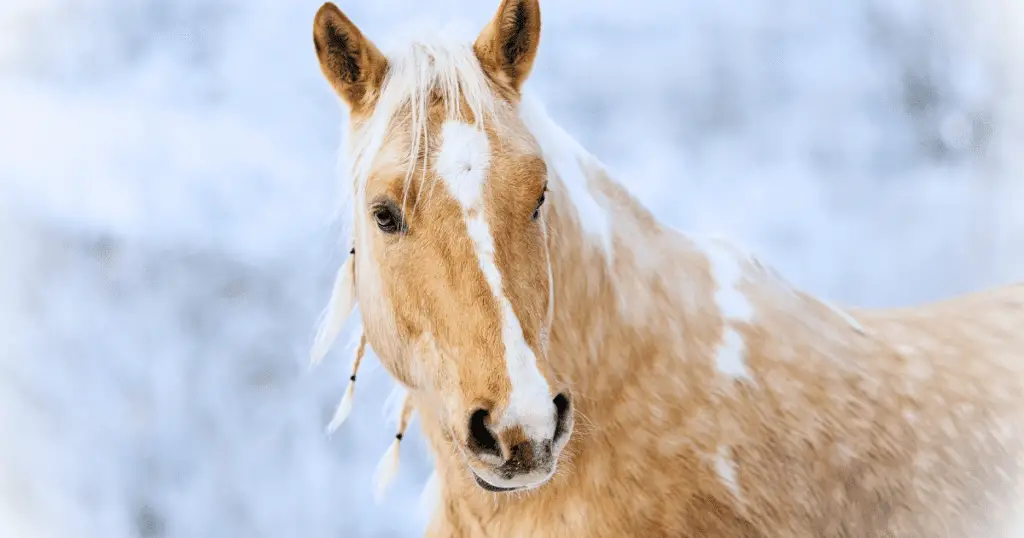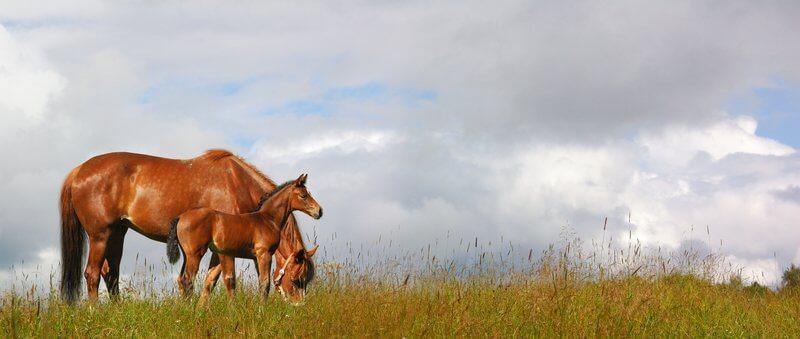
Around one month prior to foaling, the teats and udder of your mare mayl become enlarged, due to milk production. However, there are also many changes taking place beneath the surface. In this article, we discuss what you should know about mare lactation.
Every foal — domesticated or wild — relies on the milk of their dam during the first months of life for survival. The mare’s milk not only provides them with immunity from disease, but also the nutrients they need for healthy growth and development.
As an expectant foal owner, it’s important you understand the process of horse lactation. Let’s explore how the secretion, composition and quality of mare milk changes before and after foaling — from pregnancy to lactation.
Secretion
Before Birth
Between two and four weeks prior to parturition, your pregnant mare’s teats and udder will become noticeably larger. The mammary glands are steadily filling with milk, in preparation for the arrival of her newborn foal.
However, with such high pressure, any weakness within the muscles of the mammary glands can result in leakage — causing her to stream valuable colostrum, made of immunoglobulins. This secretion isn’t normal and any lost colostrum can place your foal’s life at risk.
After Birth
As the foal matures, their requirement for milk is directly linked to their nutrient intake from other sources. When pasture consumption and creep feeding increases, their demands to suckle decreases and so too does milk production.
This can cause serious problems if unexpected. Within just 24 hours, your mare’s mammary glands begin to respond to less suckling. If the foal is unable to suckle for 24 hours and other measures aren’t put in place, milk production may be insufficient following their recovery.
Composition
Your mare’s milk is a rich source of fat, protein and lactose to support their young foal’s growth and development. It contains:
- Fat: Globules which contain a high concentration of short-chained fatty acids
- Protein: Immunoglobulins are the first form of protein produced and found within the colostrum. During lactation, protein remains present in the form of caseins and whey proteins.
- Lactose: Made up by two molecules of glucose, lactose is easily digested by foals to provide them with readily digestible energy until they reach 9-12 months of age.
While mare owners often don’t want to think of this scenario, complications during foaling or developmental problems can leave you with an orphan foal or one providing a higher level of support in the form of bottle feeding.
Your veterinarian will be able to assist you in formulating a suitable diet for your newborn foal, should this occur. Remember, it’s not advised to feed milk from other animals to foals at any stage in their development.
Quality
The quality of your mare’s milk will change dramatically over the course of lactation.
During the first 12 hours following parturition, her milk contains 13.5% protein, produced by the immunoglobulins within the colostrum. However, after 12 hours, the milk’s high protein concentration begins to decline rapidly; gradually falling to 2.7% protein during the remainder of lactation.
In addition, while lactose — sugar — levels remain relatively constant throughout lactation, fats, calcium and phosphorus will also drop, similar to protein. This decrease in nutrients is nature’s encouragement for your growing foal to seek nutrients from sources other than their dam.



